Just prior to Covid, I decided to take a longed-for cruise on the Nile, between Luxor and Aswan. There are many cruise ships that offer a 4 or 5-day exploration of this fascinating part of Egypt. I simply chose one and took an hour-long flight from Cairo to Luxor to begin my Nile cruise.
A Nile River cruise is one of the most popular ways to see the ancient sights of Egypt as many of the attractions are located right along the river’s shores.
At night, many of these temples and monuments are illuminated. The sight of them from the water is especially breathtaking and magical.
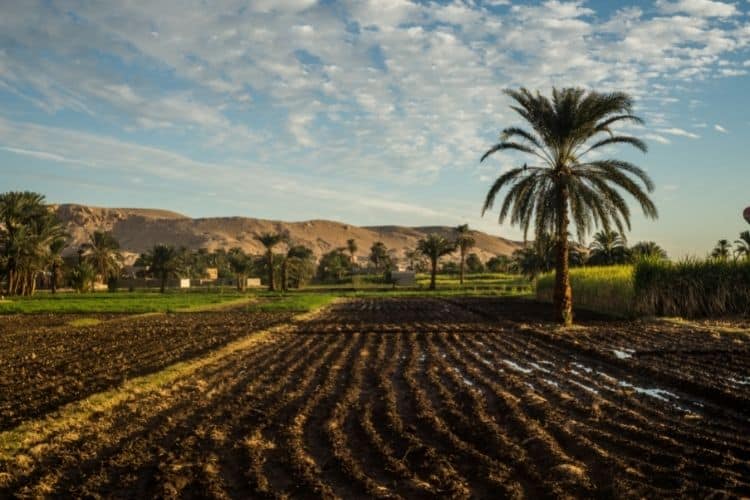
DESERT & GREENERY
Since I had already visited Cairo, I had been to the city’s fascinating and educational Egyptian Museum and the nearby Great Pyramids of Giza.
Therefore, upon my arrival in Luxor by plane, I was immediately struck by the contrasting landscape. Cairo’s desert and debris were now replaced by a greener, cleaner, more fertile area.
The desert was still nearby, but there were crops of alfalfa, wheat, cabbage and sugar cane. As we sailed the Nile, we could see cattle and water buffalo grazing along the banks of the river.
PARTIES & HISTORY
While on our cruise, several of us participated in a “Galabeya Party” aboard our boat. We were encouraged to purchase a traditional loose-fitting Egyptian garment and enjoy the traditional music and join in the fun.
There was also time to read about our Nile cruise itinerary. Each day was a dream come true for historically minded travelers, as we visited many of Egypt’s major attractions.
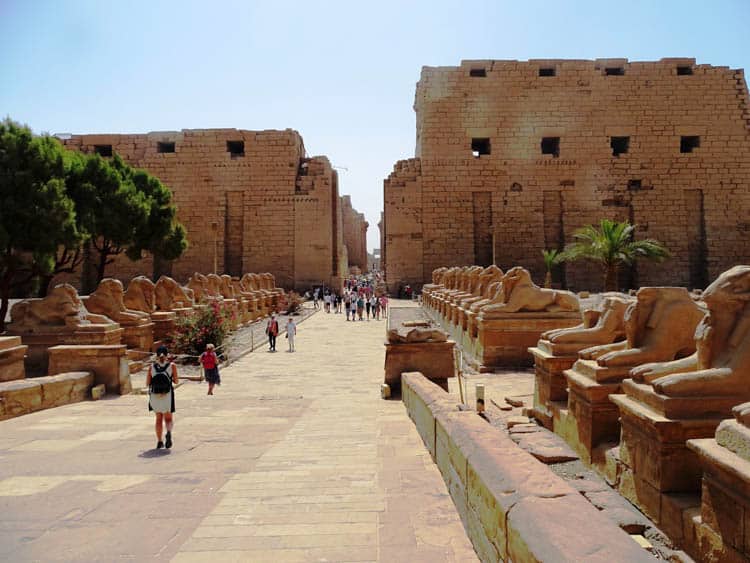
KARNAK & LUXOR TEMPLES
At the beginning of the trip, at Luxor, I toured the East Bank and visited both the Karnak Temple and the Luxor Temple. These two magnificent structures are located just over a mile apart and are linked by a line of sphinxes. These structures were built in what was then the ancient city of Thebes (now Luxor).
The Karnak Temple is the larger of the two. It’s actually more like a village, for it has several temples and chapels within the complex. I just couldn’t grasp how such a gigantic, ancient structure could still be in such great condition.
Especially as I was informed, by my guide, that there was a lot of flooding and erosion in this area over the centuries. However, I also learned that that hundreds of tons of mud and silt were removed to get the complex as it’s now seen.
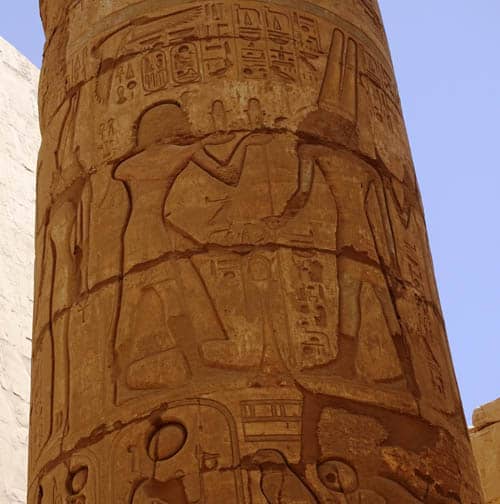
I was especially impressed by the well-preserved ancient-colored ceilings and the intricate carvings displayed on the walls and pillars. Similarly, the nearby Luxor Temple is another large complex that was built centuries ago.
The gigantic statues, obelisks and hall of pillars were intriguing.
THE VALLEY OF THE KINGS
After my tour of the East Bank, my first major stop on the West Bank of Luxor was at the Valley of the Kings. This is the burial place of the ancient pharaohs.
Although most of the tombs are not open to the public, and the valuables have already been removed by ancient tomb raiders, it’s still definitely worthwhile to visit at least one of them.
The most famous tomb to visit is that of King Tut and the most popular of the tombs is that of King Ramses IX. In one of the tombs that I visited I encountered a steep descent of 192 steps.
I marveled at the beautifully decorated walls and ceilings. I then, of course, had to ascend these stairs back up to the surface.
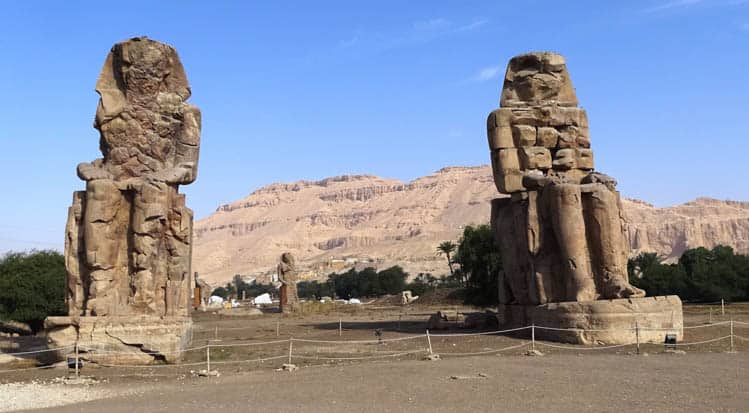
TEMPLE OF HATSHEPSUT & COLOSSUS OF MEMNON
Close to the Valley of the Kings is the Temple of Hatshepsut, a masterpiece of ancient architecture. It has three massive terraces that rise up above the desert floor and into the limestone cliffs.
Not far away is yet another marvel: two gigantic stone statues that are known as the Colossus of Memnon.
These twin statues depict Pharaoh Amenhotep III in a seated position, with smaller figures of his wife and his mother. These stone statues originally stood guard at a large temple complex.
However, the statues are now quite damaged by time and the complex has basically disappeared.
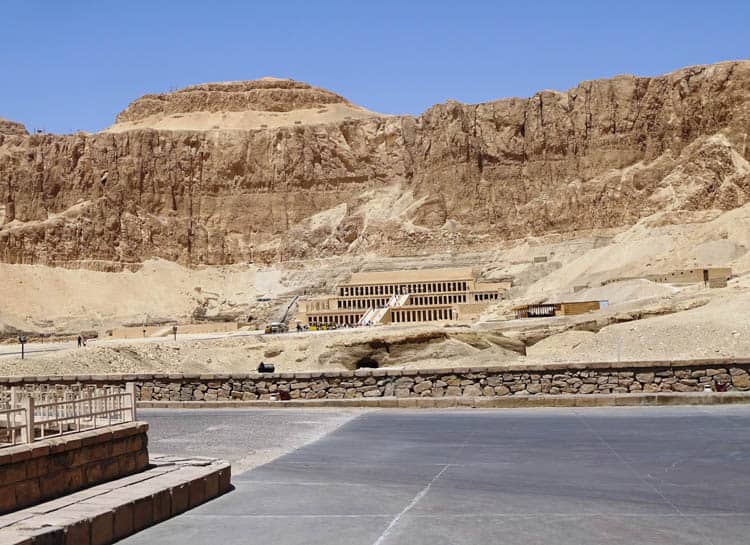
EDFU TEMPLE
After exploring Luxor, we cruised to Edfu and visited the Temple of Edfu, also known as the Temple of Horus. It’s also well preserved and I was especially drawn to the many Horace statues.
These included several of Horus as a falcon and even Horace as a sun disc that’s protected by two cobras. I also viewed the blackened ceiling from cooking that still remained within the temple and the temple’s fascinating lotus columns.
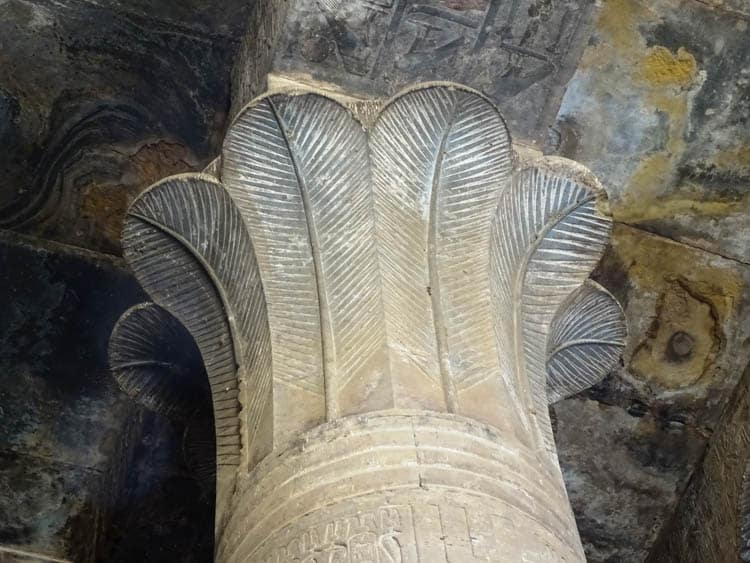
TEMPLE OF KOM OMBO
As we continued our cruise on the Nile we went from Edfu to Kom Ombo. Here we visited the Temple of Kom Ombo, which is often referred to as the Crocodile Temple.
The nickname is due to its location at a bend in the Nile where crocodiles were often known to bask in the sun. The temple is dedicated to both Sobek, the local crocodile god, and to Horace. There’s also a Crocodile Museum here as well as a large Crocodile Cemetery.
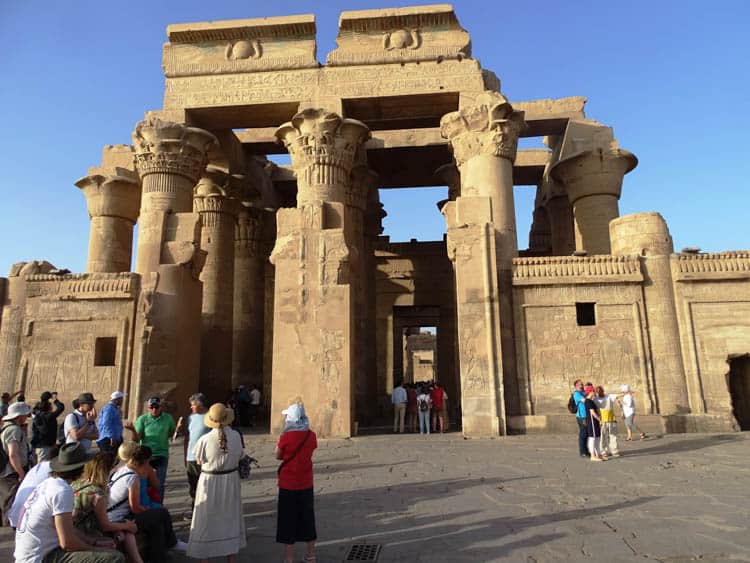
TEMPLE OF ISIS
We finally arrived at Aswan, our cruise destination point where we boarded a Nubian motorboat to get to the nearby island of Agilkia. Here we visited the Philae Temple, which is also known as the Temple of Isis.
It used to be located on the nearby island of Philae (thus the temple’s name), but the temple and shrines were painstakingly dismantled, moved and reconstructed on Agilkia.
This was done because the Aswan Dam flooded Philae and it was decided to move it in order to preserve this beautiful complex.
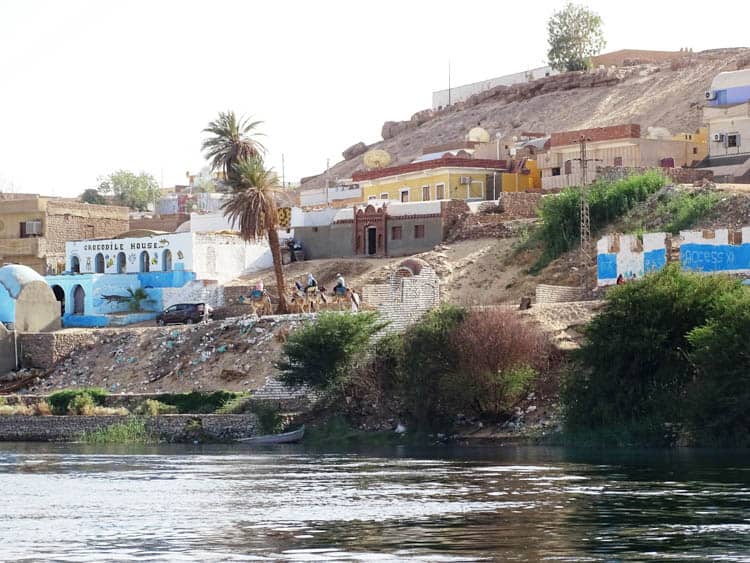
ASWAN ON THE NILE CRUISE
While in Aswan, I’d recommend learning about Nubian culture in the Nubian Museum. Many of these people were disrupted from their villages with the building of the Aswan Dam and the creation of Lake Nasser.
Additionally, I’d suggest a visit to the dam itself and to one of the new Nubian villages that emerged after the dam was built. I decided to add on such a trip while in Aswan, so I boarded a motorboat with a guide and visited one of the very colorful villages located near the Aswan Dam.